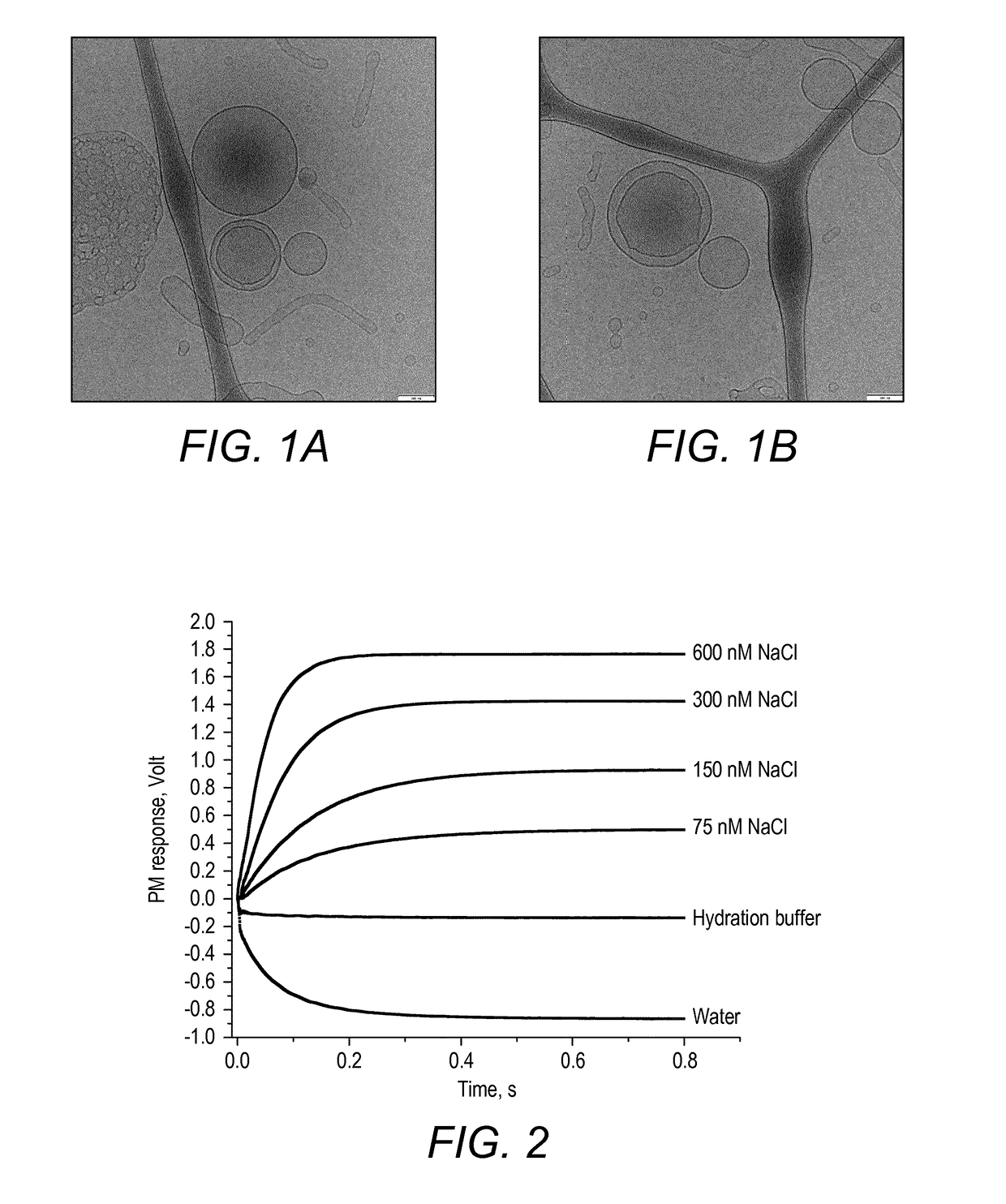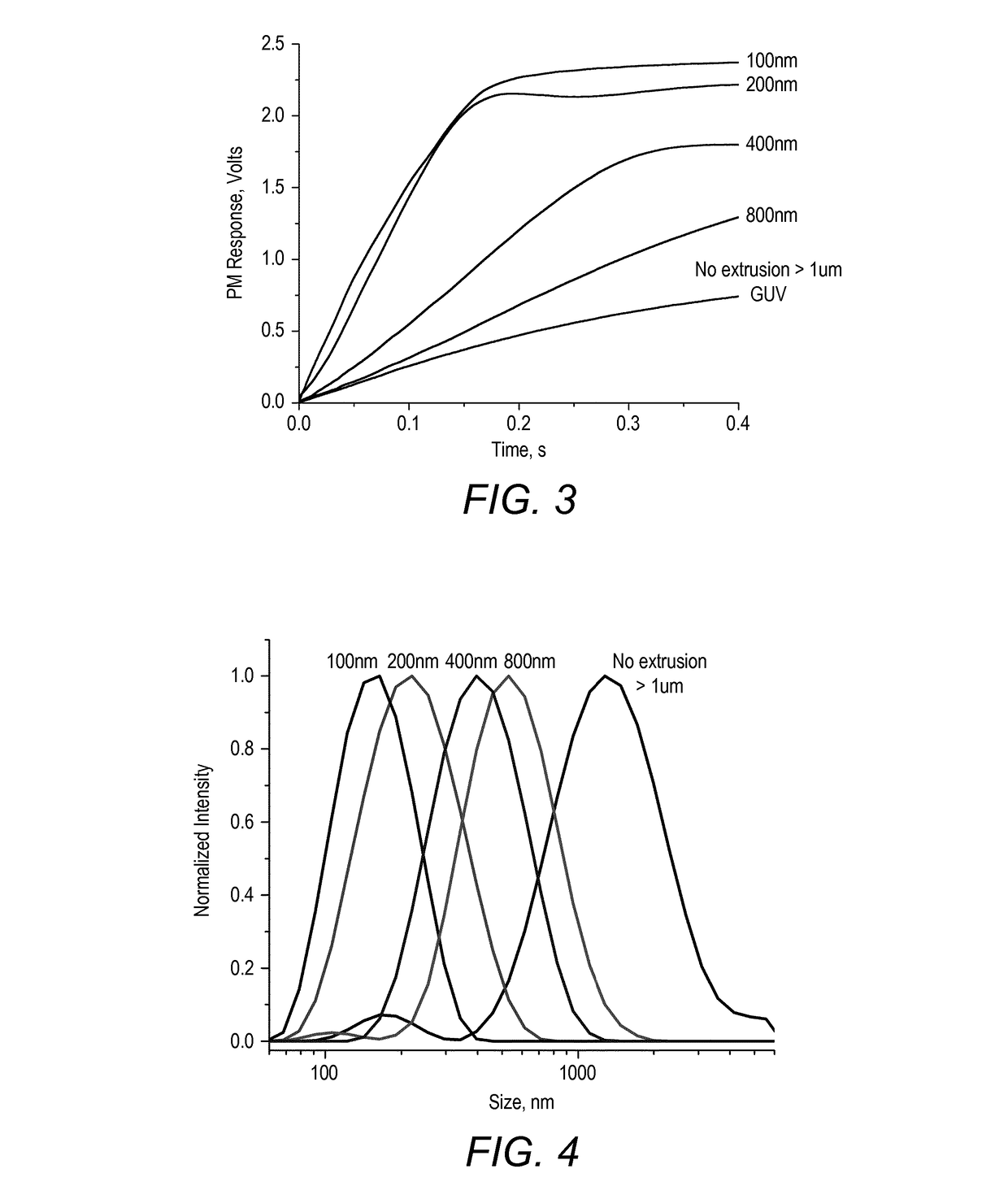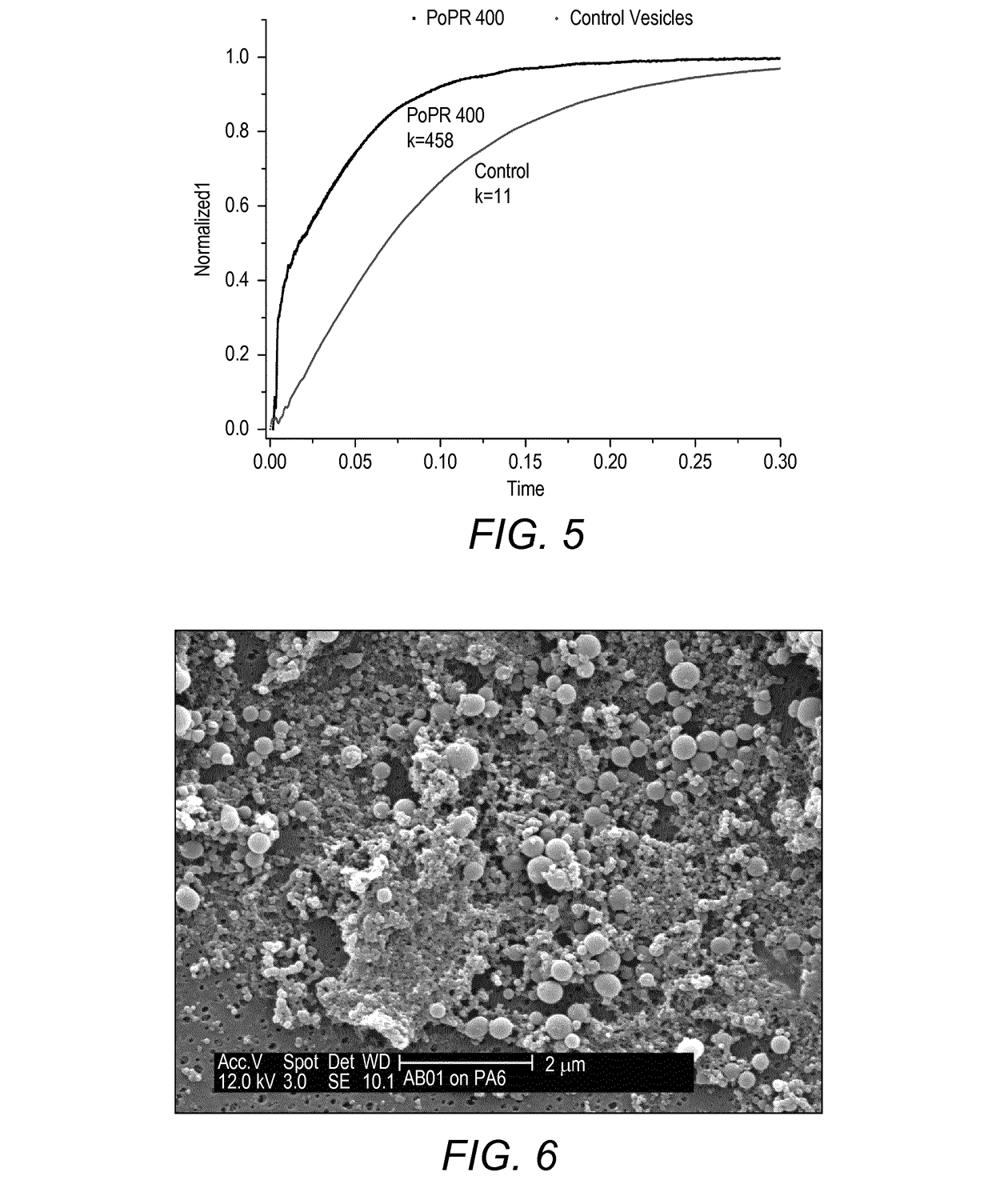Vesicles formed from block copolymers, and novel block copolymers
a technology of copolymer and vesicles, which is applied in the field of vesicles formed from block copolymers, can solve the problems of difficult functionalisation or cross-linking of ethylene oxide, and difficulty in handling
- Summary
- Abstract
- Description
- Claims
- Application Information
AI Technical Summary
Benefits of technology
Problems solved by technology
Method used
Image
Examples
example 1
reparation
[0521]Step (a): PB Synthesis
[0522]Polybutadiene was synthesized following the protocol of Hillmyer, M. A.; Bates, F. S. 1996, 9297, 6994-7002 with some modifications. The anionic polymerization of butadiene was carried out in THF at −60 to −50° C. using sec-butyl-butyllithium as the initiator. A dry 2 neck flask was dried in the oven overnight and a line was attached to one port with a septum to another. The flask was flame dried and a stir bar was added. 30 ml of Dry Solv THF was added to the 2 neck flask using a cannula. 11 ml butadiene (0.13 mol) was condensed in a condensing flask. Liquid nitrogen was first used to condense polybutadiene and then melted using a dry ice-acetone bath. This was transferred to the 2 neck flask using a cannula. 7 ml (0.0098 moles) of 1.4 M sec-butyl lithium initiator was swiftly added. The polymerization was allowed to proceed for 3 h. End capping was accomplished by adding 2 ml (0.051 moles) of ethylene oxide at −60° C. upon complete conve...
example 2
reparation
[0532]PB12-PMOXA5-NH—(CH2)2—NH2 polymer (50 mg) was dissolved in 1 ml chloroform in a round bottom flask (Pyrex 200 ml). Solvent was evaporated on a rotary evaporator under reduced pressure producing a thin film of polymer. Subsequent 3 h high vacuum treatment removed the traces of chloroform. 5 ml of water was further added and stirred at 600 rpm. This way a 10 mg / ml suspension of vesicles was prepared. Upon sampling for characterization (LSM, Stopped-Flow, DLS), the suspension was extruded successively through polycarbonate Track ached filters (Millipore) of 1 μm, 800 nm, 400 nm, 200 nm. At each of the extrusions, the suspension was sampled for characterization.
[0533]The vesicles were characterised as follows. Cryogenic transmission electron microscopy (cryo-TEM) was used for particle imaging, and surface functionalization was studied using LSM imaging.
[0534]For the cryo-TEM, the microscope was FEI TecnaiG2, TF20. Samples were vitrified using a vitrification robot, Vitro...
example 3
of Protein into Vesicles
[0541]Water permeability of polymer vesicles was enhanced by reconstitution of water channel membrane protein—aquaporin Z. Film hydration procedure was modified to accommodate addition of protein at PoPr 400. Shortly: to the hydrating vesicles protein solution is added at PoPr 400. Next steps follow the protocol of standard vesicles formation.
[0542]PB12-PMOXA5-NH—(CH2)2—NH2 polymer (50 mg) was dissolved in 1 ml chloroform in a round bottom flask (Pyrex 200 ml). Solvent was evaporated on a rotary evaporator under reduced pressure producing a thin film of polymer. Subsequent 3 h high vacuum treatment removed the traces of chloroform. 5 ml of 100 mM Na-MOPS buffer containing 0.1245 mg of aquaporin Z (Applied Biomimetic) and 0.5% octyl glucoside (O311-n-Octyl-β-D-Glucopyranoside, Anagrade, Anatrace) and was further added and stirred at 600 rpm. 10 mg / ml suspension of proteo-vesicles was extruded trough 200 nm polycarbonate Track ached filter (Millipore). Permeabi...
PUM
| Property | Measurement | Unit |
|---|---|---|
| thickness | aaaaa | aaaaa |
| diameters | aaaaa | aaaaa |
| diameter | aaaaa | aaaaa |
Abstract
Description
Claims
Application Information
 Login to View More
Login to View More - R&D
- Intellectual Property
- Life Sciences
- Materials
- Tech Scout
- Unparalleled Data Quality
- Higher Quality Content
- 60% Fewer Hallucinations
Browse by: Latest US Patents, China's latest patents, Technical Efficacy Thesaurus, Application Domain, Technology Topic, Popular Technical Reports.
© 2025 PatSnap. All rights reserved.Legal|Privacy policy|Modern Slavery Act Transparency Statement|Sitemap|About US| Contact US: help@patsnap.com



